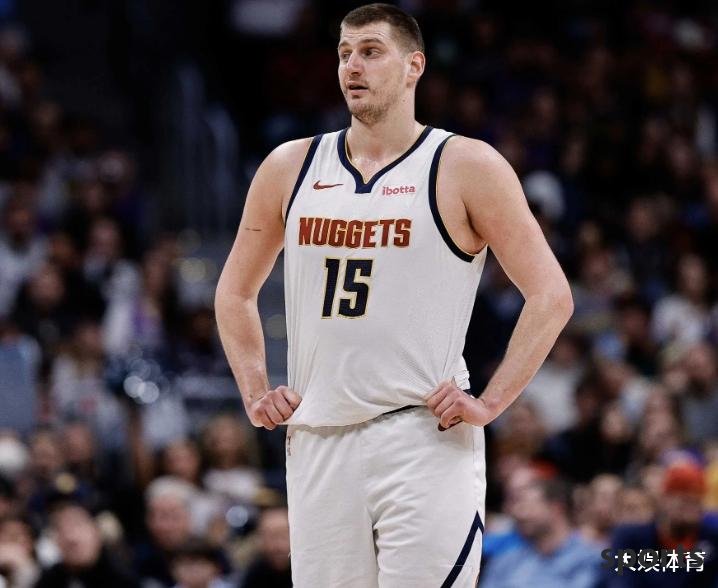Moon Sports > Basketball > Why is Jokic the draft pick 41st pick in the second round? His fat body makes him not favored
Why is Jokic the draft pick 41st pick in the second round? His fat body makes him not favored
On June 9, in the long history of the NBA, the contrast between draft picks and players' final achievements has always been a topic for fans to talk about. At the 2014 draft, a fat center Nikola Jokic from Serbia was selected by the Nuggets with the 41st pick in the second round. This young man, who was believed to have to be approved by the coach at the time, has now grown into a three-time MVP winner and the core of the championship. Behind this counterattack legend is the collective misjudgment of the scouting system, the cognitive barriers of the European League, and the changes in the times of basketball philosophy.

**The fatal blind spot in the scout report**
The scouts of various teams that year were full of ridiculous descriptions. ESPN draft experts once bluntly said that "his movement is like dragging a refrigerator," while Sports Illustrated is worried that "NBA-level physical training will cause his skeleton to collapse." These judgments originated from the traditional basketball thinking's solidified perception of the center's body shape - at that time the league was on the eve of the "small ball revolution", and the team preferred modern insiders like Embiid, which had both athletic ability and muscle lines. Jokic's 2.13 meters tall and 129 kilograms of "beer belly" figure seem out of place in the physical test era that emphasizes vertical bounce and horizontal movement speed. The deeper misjudgment lies in the mechanical interpretation of the European League data. During his time in the Serbian League, Jokic's average of only 11.4 points and 6.4 rebounds per game is indeed mediocre, but scouts ignored two key details: he averaged only 21.7 minutes per game, and his team Mega team emphasizes team cooperation. Nuggets International scout director Rafael Julian later revealed: "We found through the video that this fat man can make the right decision every time he touches the ball, and this basketball IQ cannot be quantified with physical measurement data. "
**Unrated European basketball philosophy**
Jokic's growth trajectory exposed the NBA's cognitive gap in the European player training system. Unlike American basketball that emphasizes personal talent, the Serbian youth training system pays more attention to the polishing of tactical literacy. Jokic, who entered the Red Star Youth Training Camp in Belgrade at the age of 14, completed more than 3,000 hours of tactical board drills before the professional league. This training model shapes his unique game rhythm - in the words of former Nuggets coach Michael Malone: "He always thinks 0.5 seconds faster than the defender, which is more valuable than bounce 20 cm higher. "

2013 U19 World Youth Championship is the biggest "clue burial event". Facing Wiggins, who later became the No. 1 pick, Jokic scored 24 points and 10 rebounds, but the game was drowned in the heated discussion of Canada's championship. What's even more ironic is that the Timberwolves, who held the second round of picks, had the opportunity to inspect this future MVP in advance, but because the management insisted on American-centrism "try-testing first and then signing" it missed the opportunity to witness its abilities with their own eyes.
**The turning point of the era of basketball evolution**
Jokic's low pick coincides with the critical point of the NBA's tactical revolution. The Warriors have not won the championship in 2014, and traditional concepts still regard the center as a guardian of the penalty area rather than an offensive hub. When Nuggets general manager Tim Connelly took the risk of making the decision, he imagined "cultivating a substitute center who can support it" rather than rebuilding the team's core. This cognition is limited to Jokic's rookie season challenge: When he sent a slam pass across the half at a high position, the scouts realized that a new species appeared on the basketball court.
The data revolution in modern basketball provides the tools for Jokic to clear his name. He contributed 16 points, 10 rebounds and 4 assists every 36 minutes in his rookie season, and his real shooting percentage was as high as 58%. These data were dimensional reduction strikes in the inside line in the mid-2010s. With the popularity of advanced data such as "real positive and negative values", people found that when this slow-moving big man was on the court, the team scored 8.3 points per hundred rounds - this was the prototype of the later "Jokic Paradox": using the defects of static talent to maximize dynamic returns.
**The multiple variables behind the counterattack**
Jokic's success is by no means accidental, but a precise coupling of personal traits and opportunities of the times. His brother Strashinia's violent training method (using MMA training to improve core strength) makes up for the body size defects, while the "low impact load management solution" developed by the Nuggets medical team solved the mobility problem. More importantly, head coach Malone broke the conventional tactical design of "taking Jokic as the starting point of the offensive" which was almost unimaginable before the small ball era.
Looking back at the 2014 draft re-arrangement, among the 40 people ranked before Jokic, only 8 people including Embiid and Aaron Gordon were selected as All-Stars. This cruel contrast confirms the limitations of the NBA talent assessment system: excessive dependence on visible talents (athleticism) and ignoring invisible talents (skill). As Spurs general manager RC Buford said: "We are all looking for the next Jordan, but we missed the magician who can redefine the game. "
Now Jokic holds three MVP trophys and FMVP trophys in his hand. His story has long gone beyond the scope of sports and has become a fable about cognitive innovation. Those traits that were once considered flaws—slow movements, unconventional shooting postures, and even the habit of drinking coke after the game were transformed into footnotes of his unique game style. This counterattack epic reminds professional sports decision makers: when evaluating geniuses, you should probably be less obsessed with templates and more awe of possibilities. After all, the progress of basketball often begins with the subversion of traditional perceptions.
Related Posts
The performance on the offensive end has also improved. Is the performance of the Lakers front line really getting better?
BasketballIn the previous NBA regular season, the Los Angeles Lakers, who were missing their two core players, narrowly defeated the Sacramento Kings at home 127-120 after a hard battle. After this game, the Lakers' record, which had won two consecutive v...
moreIn the absence of the great emperor, the new three giants scored 94 points to win consecutively! The third overall pick 26+7 has a strong momentum. Will George be the fourth player in the future?
BasketballOn October 28, during the NBA regular season, the Philadelphia 76ers defeated the Orlando Magic 136-124 to win three consecutive games. In the absence of Embiid, Maxey, Edgecombe, and Oubre scored 20+ to defeat the Magic. Maxey scored 40+, but the n...
moreFirst 50 points in team history in 27 years! Markkanen scored 51 points and 14 rebounds, Jazz beat Suns in overtime
BasketballThe Jazz defeated the Suns at home 138-134 in overtime. Lauri Markkanen made 14 of 32 shots, 6 of 13 three-pointers, 17 of 17 free throws, 51 points, 14 rebounds, 3 assists, and only 1 turnover. This is the first 50-point game in Jazz history since...
more
Hot Posts
- Seth Curry - Brothers on the same stage, Seth fights for the championship
- Anthony is officially inducted into the Hall of Fame! Maybe he only retired from the Knicks No. 7, but the Nuggets No. 15 cannot retire?
- NBA offseason turmoil: The giant chess game behind a billion-dollar contract
- Scott: Tatum seems to die when his Achilles tendon breaks, but Kobe will never do this
- American News: The Cavaliers don t need to trade core players such as Garland. They still have great potential if they are not the Lakers.
- Successfully played the role of the surprise! The Pacers forward performs amazingly in overtime?
- Questioning the Mavericks to Becoming the Mavericks! Famous reporter: Antetokounmpo is on his way to the Lakers
- Homegren burst! Thunder 149-106 Nuggets, Alexander watches 34+4+7, Harten 14+8+5
- 4.3 seconds to win the gods! Brunson s final victory tribute to Jordan, New York s new king rewrites the history of the second round pick in one game
- Shepard led the remnant team to a great victory over the Hawks. The new aid combined offense and defense with 28+3+3. The Rockets found another treasure!
Recent Posts
-
Haslem: The competition in the West is too brutal. The Lakers cannot slow down, otherwise James will be dissatisfied.
-
Controversy! Nuggets former player Porter Jr.: I can always beat the Lakers. It feels so cool to eliminate James in the playoffs
-
A small victory of 10 points is okay. The Warriors have 3 changes. One player has scored, and Butler switches modes.
-
Media Person: Tomorrow Yang Hansen will face the Warriors again. It is still unknown whether the Trail Blazers’ morale needs to be adjusted.
-
The Kings play a good hand with a bad hand! Fox is too wise to give up the 6th All-Star for Kumingga.
-
Orthopedic experts talk about Tatum s injury: It may take 8-12 months to recover. Superstar mentality is a key variable
-
Another magical operation of Mr. Kang, the luxury tax is greatly reduced
-
The West is 7th in the second place! Rockets, you have to recognize the reality: the team has only 2 people without selling products!
-
Striving for 2 consecutive victories! Three Rockets and Jazz generals are absent, Durant’s debut is scheduled, and Uduka shows off his killer move
-
The famous man bluntly said that the Lakers gave up James and retired tour wasted opportunities to win the championship. Doncic is very dissatisfied with James